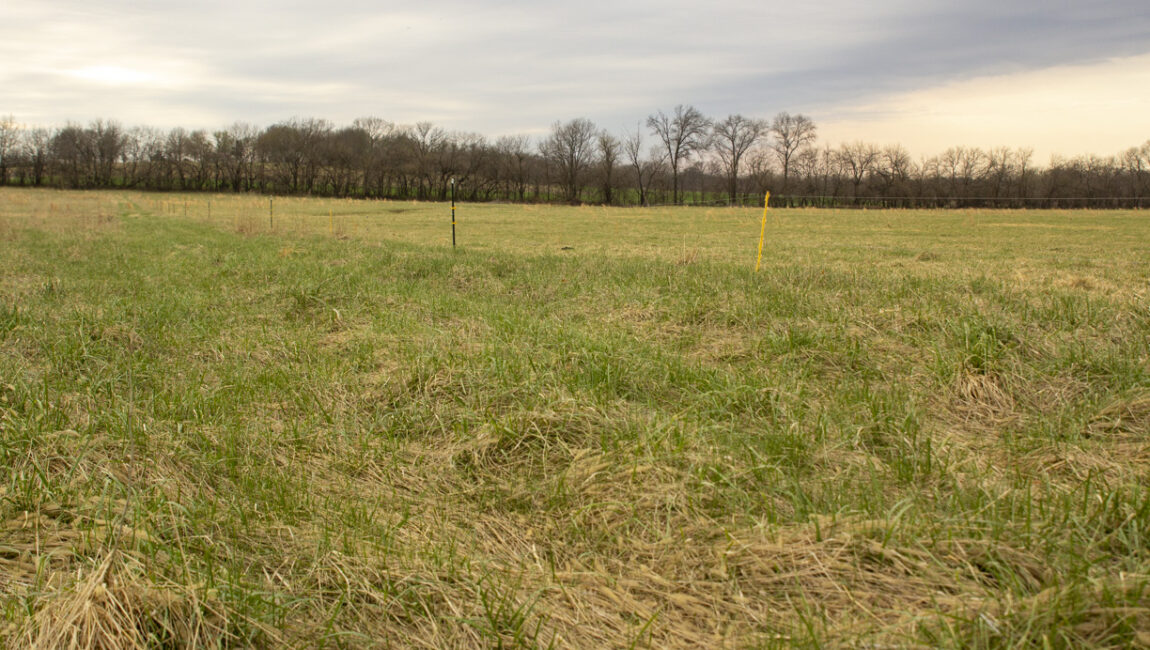
How to help your pasture transition out of winter for a productive spring.
It’s that time of year—the sun is feeling warmer and the tips of daffodils and crocuses are beginning to pop up out of the soil. The hope of spring is in sight! Green is just around the corner, and no one is more eager for it than your herd.
Since your livestock are only as healthy and robust as the ground they graze, here are a few helpful reminders before you open that farm gate to greener pastures.
Before the Green
Drag
Before the grass starts showing green, consider getting a jump start on biology with a drag harrow. Dragging your pasture is a sure way to even out pasture growth and loosen up clumped thatch to make room for new growth. (Thatch is the matted layer of dead grass and stocks on top of the soil.)
More importantly, it spreads out manure piles, dispersing precious microbes back into the soil. You want to do this before any seedlings take sprout in these mounds so you don’t destroy new growth. Dragging is also a great way to broadcast seed, giving the seed direct contact with the soil. Dragging your pasture early helps ensure all new growth has a clear path to the sun.
Burn
Every 2-4 years, you may want to consider a prescribed, or controlled, burn of your pasture. By burning off old thatch, or dead debris left from prior years, you open up your land for new growth. Controlled burns can be very beneficial, especially if you find yourself fighting woody-type plants such as sumac, buckbrush or blackberry.
If you do choose to go this route, safety needs to be first and foremost. The Missouri Prescribed Fire Council is an organization completely dedicated to ensuring controlled burns stay controlled. Be smart and contact them first.
Fertilize
If you didn’t fertilize in the fall, then late winter early spring is a good time to add nutrients back into your pasture. Ideally, this is done after the main thaw, when there is still more than likely a cold snap coming to firm up your soil surface again. Based on your fall soil samples, apply phosphorus, potassium or other nutrients to achieve optimum PH and fertility based on your forage species. Hold off on the nitrogen until later in the season, as excess nitrogen tends to increase the alkaloids in fescues.
Scout
Take a walk around the perimeter of your pasture, as winter can be hard on your fence line. Also, scout out any wooded areas—keep an eye out for tree damage and clear out any large debris. If any large shade areas were destroyed over the winter, consider constructing a lean-to until new trees can get established.
Add Some Green
Frost Seed
If there is still some snow on the ground or the ground isn’t thawed yet, late February through early March can be a good time to frost-seed your pastures. Certain legumes do great with frost-seeding as they benefit from the frost-thaw cycle of early spring. Also, legumes are a great way to lower your pasture’s need for nitrogen.
Broadcast Seed
Also known as overseeding, broadcasting is the practice of throwing or casting seed over your pasture without actually planting a seed into the soil. The best time to do this is after you have dragged your pasture to break things up and smooth out the land. For smaller pastures, you can do this by hand, or by using a cyclone spreader. If you have larger areas, there are many kinds of spreaders you can attach to a small tractor or ATV to avoid soil compaction, as spring soil has a tendency to be soft.
Herd Seed
We’re not insinuating strapping spreaders onto your herd here, but consider releasing your livestock into the pasture after you have broadcast seed. As they work back and forth across your pasture, their hoof-to-soil contact works the seed into the ground. This is ideal while the ground is still moist and soft. However, this may not work for all seeds. If the ground is to soft, some sees may pushed too deep.
After The Green
Grazing Management
Probably one of the most crucial components of a healthy pasture is grazing management— not just during spring, but all year long.
As tempting as it is to let your herd out as soon as green has been spotted, make sure that new growth is established. A quick tongue test will determine if your pasture is ready. The tongue test is simply grabbing a handful of the plants just as a cow’s tongue would. If it pulls out of the ground rather than breaking off above the ground, your pasture is not ready for grazing.
If you can, split large pastures up to eliminate selective grazing and encourage even grazing. In addition, because spring is notorious for rain and mud, splitting your pasture can keep your herd from turning wet areas into mud pits. Also, leave at least 4” of height to ensure regrowth. If possible, wait a couple weeks before turning them back out on the same pasture area; 30 days is ideal.
The better care you give your pasture land, the healthier your herd will be.
